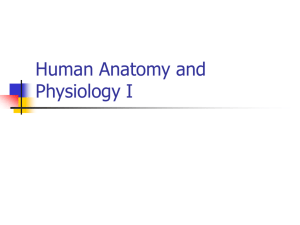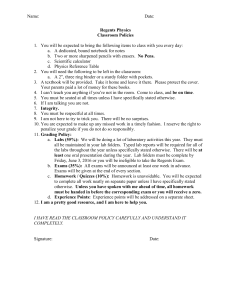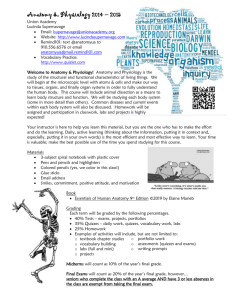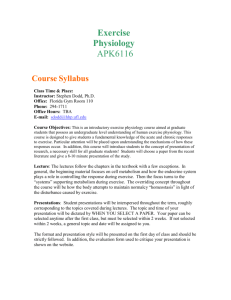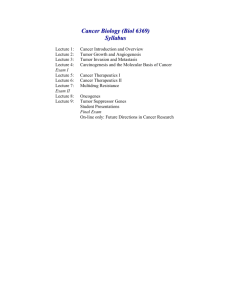Biology 211 Anatomy & Physiology I
advertisement
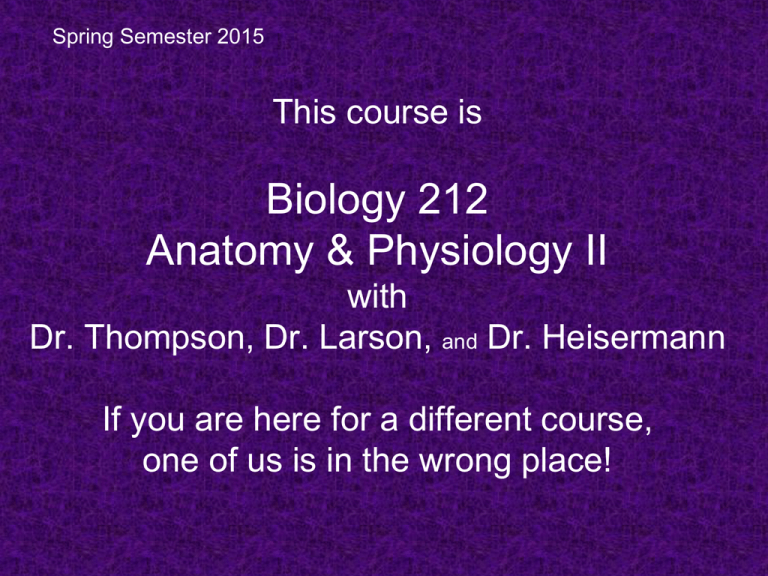
Spring Semester 2015 This course is Biology 212 Anatomy & Physiology II with Dr. Thompson, Dr. Larson, and Dr. Heisermann If you are here for a different course, one of us is in the wrong place! Format of the course: Lecture: Mondays, Wednesdays, and Fridays 10:00 to 10:50 am Lab: Section 19: Thursdays 2:00-3:50 pm Section 20: Wednesdays 4:00-5:50 pm Section 21: Mondays 4:00-5:50 pm Course Materials: Textbook: Saladin, “Anatomy and Physiology The Unity of Form and Function” (other books may be acceptable) Lab Exercises: Posted online through the course webpage Bring your textbook to lab each time Glove Voucher: Purchase at WSU Bookstore $7.00 Medical Dictionary highly recommended. Find one you like. Webpage: http://course1.winona.edu/ethompson/212.htm Course syllabus, reviews, PowerPoints, & other information. Attendance and Classroom Etiquette Attendance required at every lecture and every lab. May be checked with quizzes & sign-ins. Computers, cell phones, tablets, etc. must be turned off during lectures and exams. Laptops or tablets may be used in lab with the instructor’s permission No i-Pods or similar devices, please. Simple test: If it is electronic and not essential for your survival (such as a pacemaker or insulin pump) turn it off and put it away. One exception: You may use an electronic voice recorder Exams 4 Lecture Exams: 50 questions each Covers: lecture information since previous exam Final Exam: 100 questions Cumulative – covers entire course 3 Lab Exams: 25 questions each worth 2 points Covers: Labs since previous lab exam Grading Total of 450 points: 200 from weekly lecture exams 150 from lab exams 100 from cumulative final exam Curve: Points added at end of course (explained in syllabus) Depends on attendance and preparation A = >91% B = >81% C = >71% D = >61% F = <61% We want to help you succeed in this class, and have posted a number of things online for you to use. You will need to access these. They are all linked through the course home-page http://course1.winona.edu/ethompson/212.htm Specifically note from syllabus: A. Reading assignments. Must be completed BEFORE the Monday lecture each week B. Dates of exams. C. How grades will be calculated and curved. The course homepage provides links to Modified copies of Powerpoints used in class. For example: If I projected this slide: The one through the webpage would look like this: You should print these out and bring them to class to take notes. No, you can not download them and bring your computer to lecture to take those notes. Be Careful! Do NOT assume that just filling in the additional material from the slides which are projected is the same as “taking notes”. Since most of the test questions for this course will be taken from what I say, not what I project on the screen, you will also need to be sure to take good notes of that information as well. The course homepage provides links to Chapter Reviews These should be used only after you think you have mastered the material. They are designed to help you identify areas in which you are still weak. The course homepage provides a link to a discussion of How to Study Most Effectively for this course. The course homepage provides a link to a discussion of How I Write Exams. Use this to help you prepare for exams. The course homepage provides links to Other Anatomy and Physiology Websites which may be of interest. Anatomy and Physiology I – Biology 211 or its equivalent is a prerequisite for this course. Since some of you may have just completed that course while others did so a year or more ago, I want to be sure that the transition from that course to this one goes as smoothly as possible. You should be particularly familiar/comfortable with a number of concepts from A&P I which will be incorporated into A&P II as well, and you should go back and review these tonight if necessary. These terms and concepts will be used in lectures and labs, and I will assume you know them on exams… You should be particularly familiar/comfortable with the following concepts from A&P I: 1) Structural Hierarchy You should be particularly familiar/comfortable with the following concepts from A&P I: 2) Cellular structure – Particularly the plasma membrane, channels, and how things get across it into and out of the cell. You should be particularly familiar/comfortable with the following concepts from A&P I: 3) Macromolecules: How amino acids form proteins How monosaccharides form carbohydrates How fatty acids & glycerol form lipids How nucleotides form nucleic acids You should be particularly familiar/comfortable with the following concepts from A&P I: 4) Basic Histology Cells, fibers, ground substance Types and classification of epithalia, connective tissues, muscle tissues, and nervous tissues You should be particularly familiar/comfortable with the following concepts from A&P I: 5) Terms of relative position: Anterior Posterior Ventral Dorsal Superior Inferior Lateral Medial Superficial Deep Proximal Distal In addition to those five broad concepts of structural hierarchy, cellular structure, macromolecules, tissues, and terms of relative position; you will need to know some additional specific information you learned in the first Anatomy and Physiology course: 1. How to properly use a microsope. 2. The mechanism of contraction in skeletal muscle (you will need to know this for cardiac muscle) 3. How an action potential is generated and propagated and what occurs at a chemical synapse (you will need to know this as we discuss neural control of different systems) This does not mean that the other topics of the earlier prerequisite course are not important. You should review them all within the next few days if it has been a while since you took A&P I. However, you will have particular problems in A&P II if you do not have a good grasp of these topics. I will assume you do, and this information will show up in exam questions. We want you to succeed in this course, so please: 1. Attend all lectures and labs, and use open lab times. 2. Come to lectures and labs prepared a) Complete reading assignments before lectures. b) Read and understand labs before lab periods. 3. Pay attention and take good notes in lectures & labs What we say as well as what is projected on the board 4. Plan to spend at least 2 or 3 hours per day studying for this class a) Reviewing notes and textbook b) Correlating lecture, lab, & textbook information 5. If you don’t understand something, ask. 6. Study each subject until you thoroughly understand it, not just until you have memorized it. Keys to succeeding in A&P 1. Study in relatively short blocks, 30 - 40 min, with breaks between 2. Use different methods of study: reading, writing, discussing, etc. 3. Be sure you understand concepts - don’t just memorize 4. Constantly ask yourself “how does structure relate to function? 5. Go back-and-forth between notes and the textbook 6. You can’t fall behind - even for a day 7. Repetition, repetition, repetition! 8. You have studied a subject enough when you can explain it to someone else without using notes. If you can’t do this, you haven’t studied enough. Any questions, or anything else we need to clear up, before we start talking about the endocrine system?
